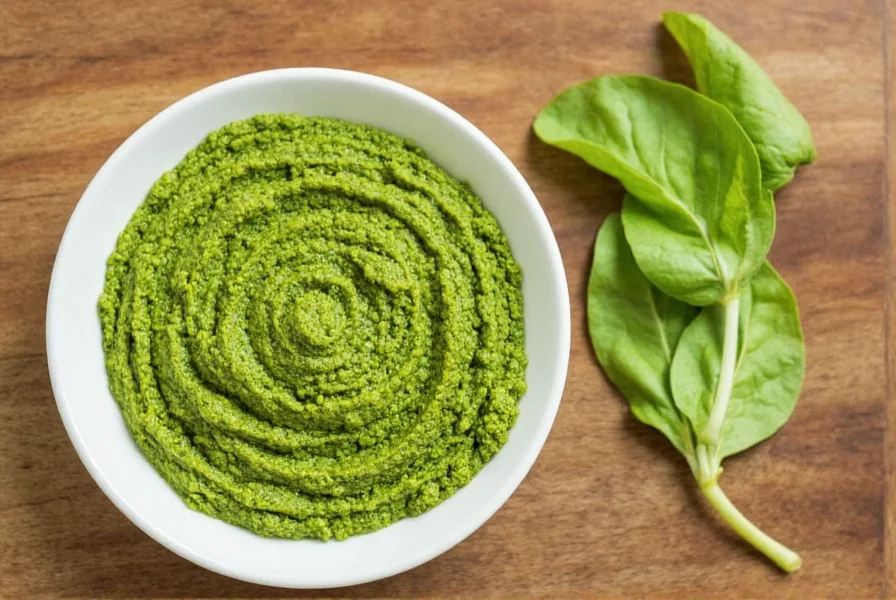Green mustard, scientifically known as Brassica juncea, represents one of the most versatile and nutritionally rich leafy greens available. This cruciferous vegetable belongs to the same family as kale, broccoli, and cabbage, but stands out for its distinctive peppery flavor profile that intensifies as the leaves mature.
Understanding Green Mustard Varieties
Green mustard encompasses several varieties that differ in leaf shape, color intensity, and heat level. The most common types include:
| Variety | Characteristics | Best Uses |
|---|---|---|
| Mizuna | Feathery, mild peppery flavor | Salads, garnishes |
| Tatsoi | Spoon-shaped leaves, mild mustard flavor | Stir-fries, soups |
| Red Giant | Deep green leaves with purple veins, robust flavor | Cooking, sautéing |
| Green Wave | Crisp texture, medium heat | Stir-fries, steaming |
Nutritional Profile and Health Benefits
Green mustard delivers exceptional nutritional value per serving. A single cup (56g) of raw green mustard provides:
- 105% of the daily recommended vitamin K
- 75% of vitamin A
- 35% of vitamin C
- Significant calcium and iron content
- Only 15 calories
The health benefits of regularly consuming green mustard extend beyond basic nutrition. Research shows that the glucosinolates in green mustard may help reduce inflammation and support cardiovascular health. When chopped or chewed, these compounds convert to isothiocyanates, which have demonstrated potential cancer-fighting properties in laboratory studies.
For those exploring nutritional benefits of green mustard greens, the vegetable's high vitamin K content supports bone density, while its vitamin A content promotes healthy vision and immune function. The fiber content aids digestion and helps maintain stable blood sugar levels.
Culinary Applications and Preparation Techniques
Understanding how to cook with green mustard properly maximizes both flavor and nutritional retention. The vegetable's peppery bite mellows when cooked, making it versatile across preparation methods:
- Raw: Young leaves work well in salads, providing a spicy kick similar to arugula
- Stir-frying: Cook briefly (2-3 minutes) to preserve texture and nutrients
- Steaming: Retains maximum nutrients while reducing bitterness
- Soups and stews: Adds depth of flavor in the last 5-7 minutes of cooking
When preparing green mustard, proper washing is essential. The crinkled leaves can trap soil, so submerging them in cold water and swishing gently removes debris effectively. For those concerned about storing fresh green mustard properly, wrap dry leaves in paper towels inside a perforated plastic bag and refrigerate for up to 5 days.
Growing Green Mustard Successfully
Gardeners interested in growing green mustard in home garden conditions will find it relatively straightforward. This cool-season crop thrives in temperatures between 45-75°F (7-24°C) and reaches maturity in 40-60 days.
For optimal growth, plant seeds ¼ inch deep in well-draining soil with pH between 6.0-7.5. Green mustard prefers full sun but tolerates partial shade. Regular watering prevents the leaves from becoming overly bitter. Harvest outer leaves when they reach 6-8 inches long, allowing the plant to continue producing.
Green Mustard in Comparison to Similar Greens
Many people wonder about the difference between green mustard and regular mustard. While both come from the Brassica family, green mustard refers to the leafy vegetable, whereas "regular mustard" typically describes the condiment made from mustard seeds.
Compared to other leafy greens:
- vs. Kale: Green mustard has a more pronounced peppery flavor and slightly higher vitamin content
- vs. Spinach: Contains more calcium and vitamin K but has a stronger flavor profile
- vs. Arugula: Similar peppery notes but with larger, more substantial leaves
Practical Tips for Selecting and Using Green Mustard
When selecting green mustard at the market, look for crisp, vibrant leaves without yellowing or wilting. Avoid bunches with flowering stalks, as this indicates the plant has bolted and the leaves will be excessively bitter.
For those new to cooking with this vegetable, green mustard recipes for beginners should start simple. Try sautéing chopped leaves with garlic and olive oil, or adding young leaves to smoothies for a nutrient boost without overwhelming flavor.
Understanding proper preparation techniques helps mitigate the natural bitterness. Blanching leaves briefly in salted water before cooking reduces bitterness while preserving nutrients. Pairing green mustard with acidic ingredients like lemon juice or vinegar creates balanced flavor profiles.
Frequently Asked Questions
What is the difference between green mustard and mustard greens?
Green mustard and mustard greens refer to the same vegetable. The terms are used interchangeably, though "mustard greens" is more common in American English while "green mustard" appears frequently in Asian culinary contexts. Both describe the leafy Brassica juncea plant.
Can you eat green mustard raw?
Yes, young green mustard leaves can be eaten raw in salads. They provide a peppery flavor similar to arugula. Mature leaves tend to be too spicy when raw, so they're better suited for cooking. The younger the leaves, the milder their flavor when consumed raw.
How does green mustard benefit heart health?
Green mustard supports heart health through multiple mechanisms. Its high potassium content helps regulate blood pressure, while the fiber content aids in maintaining healthy cholesterol levels. Additionally, the antioxidants in green mustard, particularly vitamin C and various flavonoids, help reduce inflammation and oxidative stress that contribute to cardiovascular disease.
Why does my green mustard taste bitter?
Bitterness in green mustard increases as the plant matures and when grown in hot conditions. To reduce bitterness, harvest leaves when young, grow during cooler seasons, and prepare with complementary flavors like garlic, lemon, or a touch of sweetness. Blanching leaves briefly in salted water before cooking also helps mitigate excessive bitterness.
Can green mustard be frozen for later use?
Yes, green mustard freezes well for long-term storage. Blanch leaves in boiling water for 2-3 minutes, then immediately transfer to ice water. Drain thoroughly, portion into freezer bags, and freeze for up to 12 months. Frozen green mustard works best for cooked dishes rather than raw applications.











 浙公网安备
33010002000092号
浙公网安备
33010002000092号 浙B2-20120091-4
浙B2-20120091-4